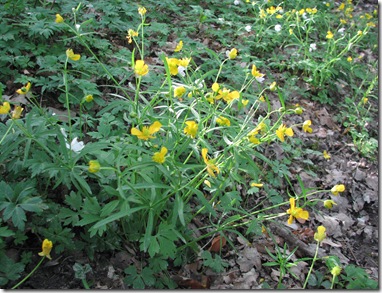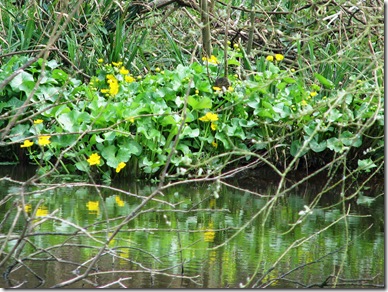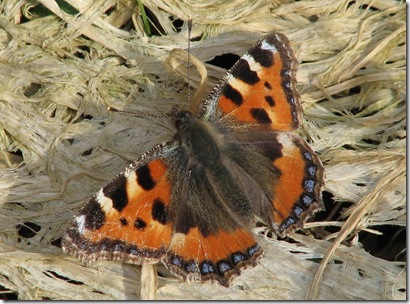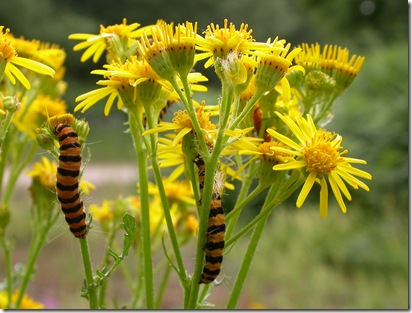Goldilocks buttercup (Ranunculus auricomus) used to be common in our High Weald woodlands when I was a boy, but it seems to have become scarcer and scarcer over the years.
There used to be a small colony in the wood at the top of our lane but I thought this had gone. Today though I was very pleased to find about half a dozen plants in full bloom beside the path. Although the abundant celandines (Ranunculus ficaria) with their rather similar yellow flowers can make the goldilocks buttercup easy to walk past, it has an attractive, airy quality with delicate stems with their narrow upper leaves holding up the shining yellow flowers.
Many of the flowers do not have full compliment of petals, or have one or two normal petals plus a few abortive ones and I wonder if this is related to their asexual reproduction
Goldilocks buttercup can reproduce asexually and several hundred microspecies (also called 'agamospecies') have been described from mainland Europe. Apparently there may be a similar number of these microspecies yet to be described in Britain.
If the plants can reproduce without pollination there would seem to be no need to attract insects making petals redundant. However, asexual reproduction implies little or no variation so, presumably, the number and type of petals would remain the same down the generations and not 'evolve' into plants with petal-free flowers.







